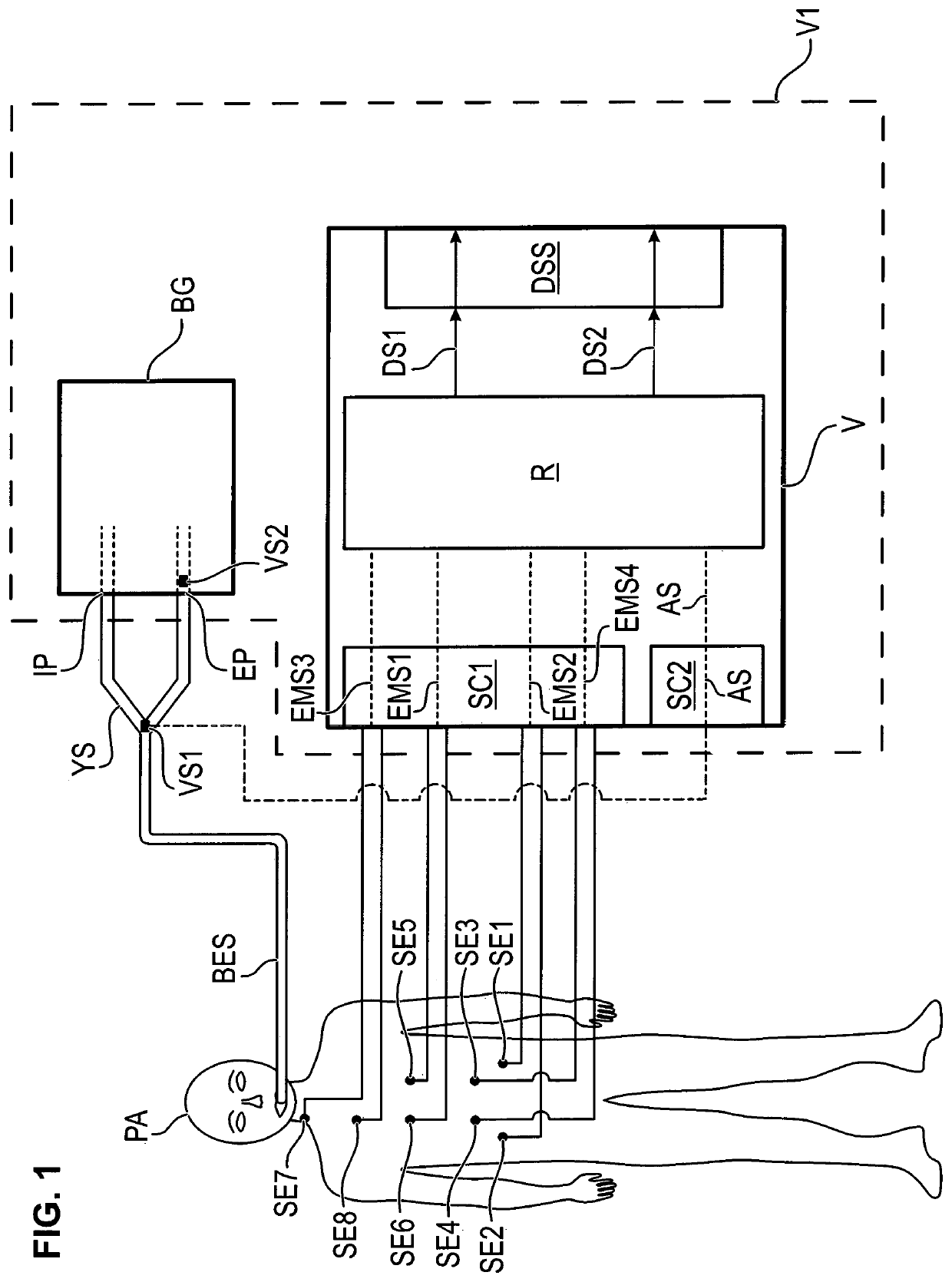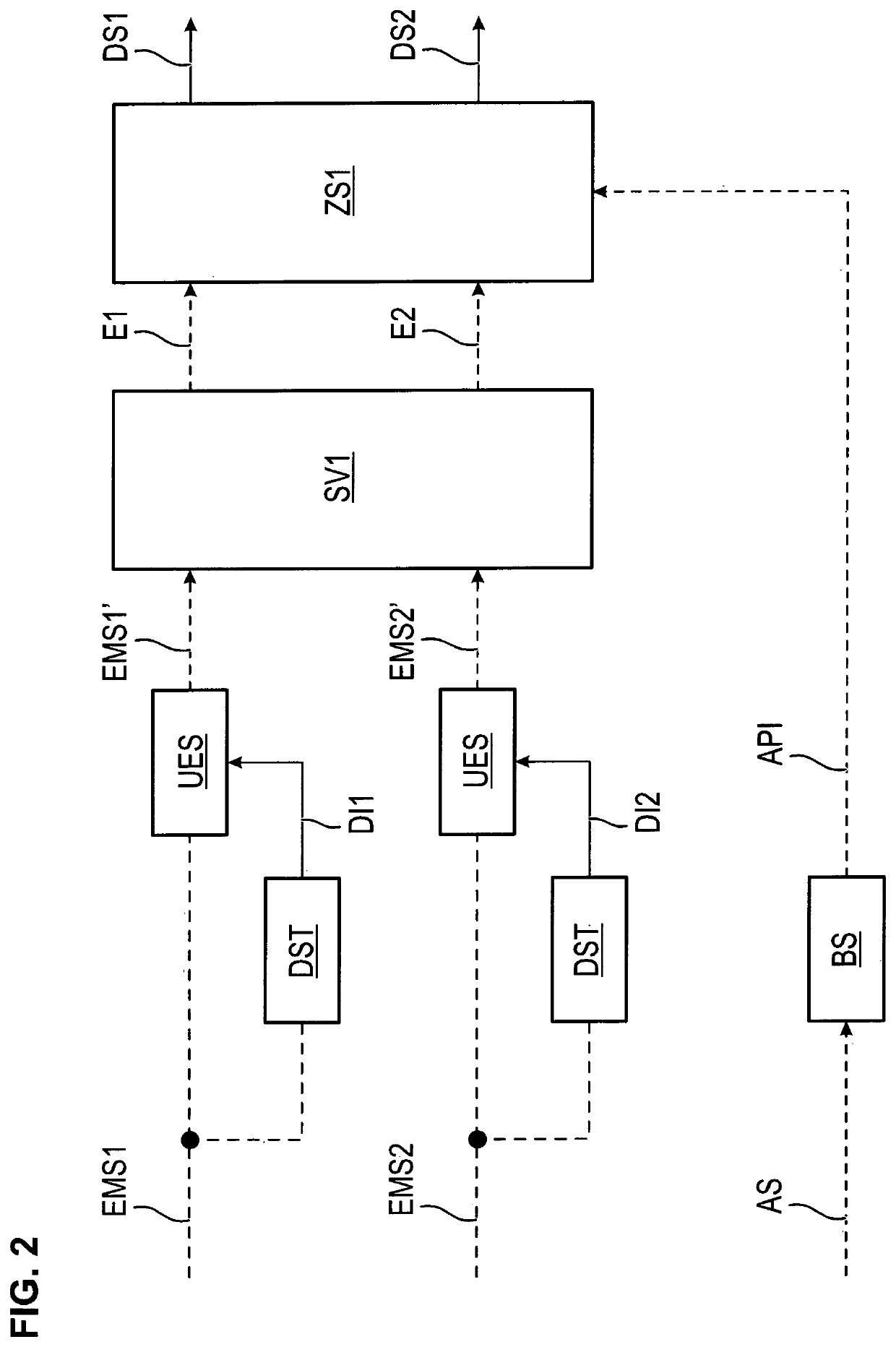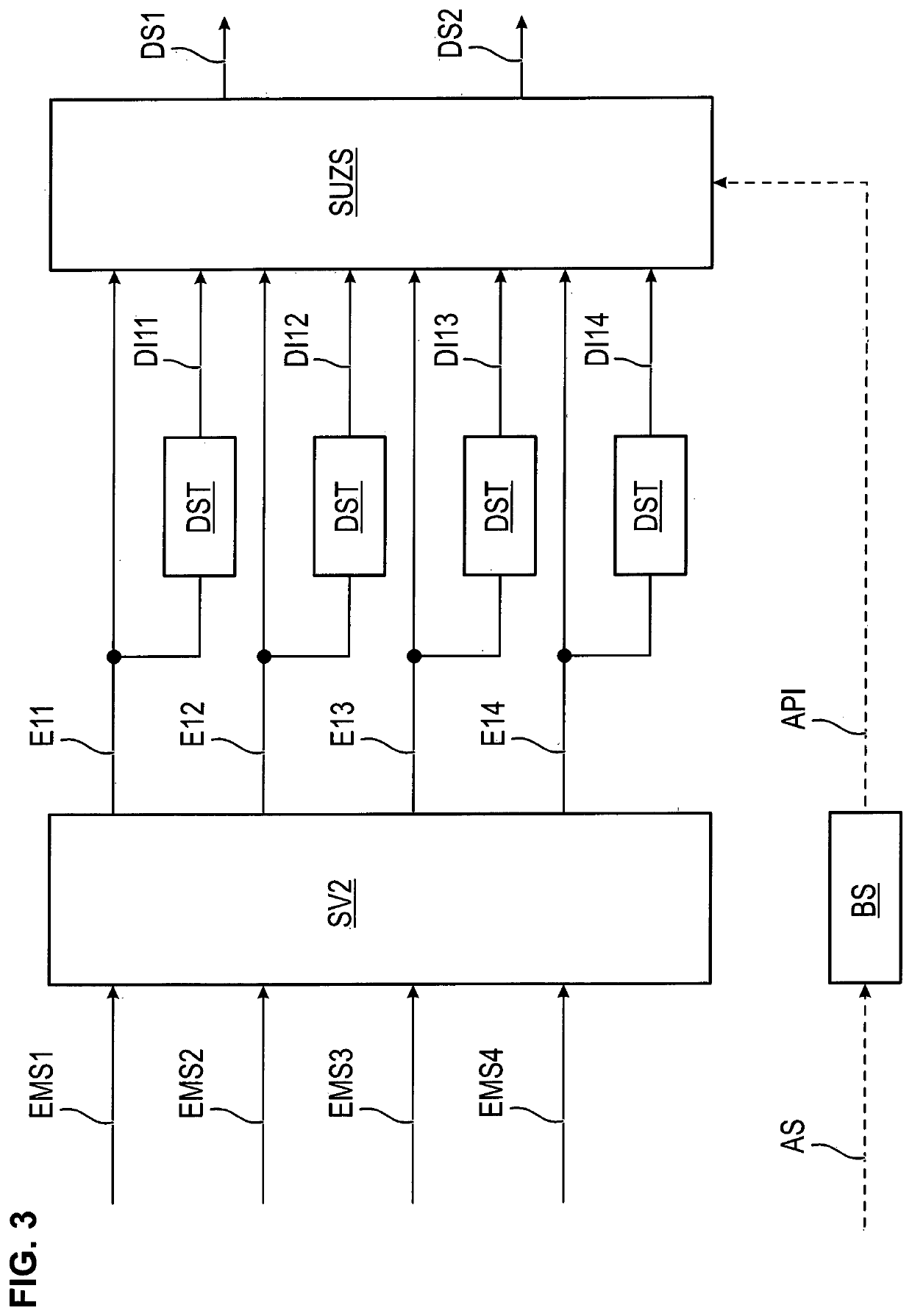Device and process for providing data signals indicating muscle activities that are relevant for inspiratory as well as expiratory breathing efforts of a patient
a data signal and patient technology, applied in the field of providing data signals indicating muscle activities that are relevant for inspiratory and expiratory breathing efforts of patients, can solve the problems that the data signals detected on the basis of surface electrodes may possibly be distorted or disturbed by disturbances, and achieve accurate and reliable ventilation of patients, and accurate determination of data signals.
- Summary
- Abstract
- Description
- Claims
- Application Information
AI Technical Summary
Benefits of technology
Problems solved by technology
Method used
Image
Examples
Embodiment Construction
[0072]Referring to the drawings, identical reference numbers may designate identical or comparable components in the following description of the attached figures, which only show some exemplary embodiments. Further, summary reference numbers (general designations) may be used for components and objects, which appear multiple times in one exemplary embodiment or in a drawing, but are described jointly with respect to one or more features. Components or objects which are described with identical or summary reference numbers may be identical in terms of individual features, a plurality of features or all features, but may also possibly be configured differently, provided nothing else explicitly or implicitly appears from the description. It should be kept in mind that an element that is shown or described as “connected” or “coupled” to another element may be connected or coupled directly to the other element or that elements lying between them may be present.
[0073]FIG. 1 shows the dev...
PUM
 Login to View More
Login to View More Abstract
Description
Claims
Application Information
 Login to View More
Login to View More - R&D
- Intellectual Property
- Life Sciences
- Materials
- Tech Scout
- Unparalleled Data Quality
- Higher Quality Content
- 60% Fewer Hallucinations
Browse by: Latest US Patents, China's latest patents, Technical Efficacy Thesaurus, Application Domain, Technology Topic, Popular Technical Reports.
© 2025 PatSnap. All rights reserved.Legal|Privacy policy|Modern Slavery Act Transparency Statement|Sitemap|About US| Contact US: help@patsnap.com



